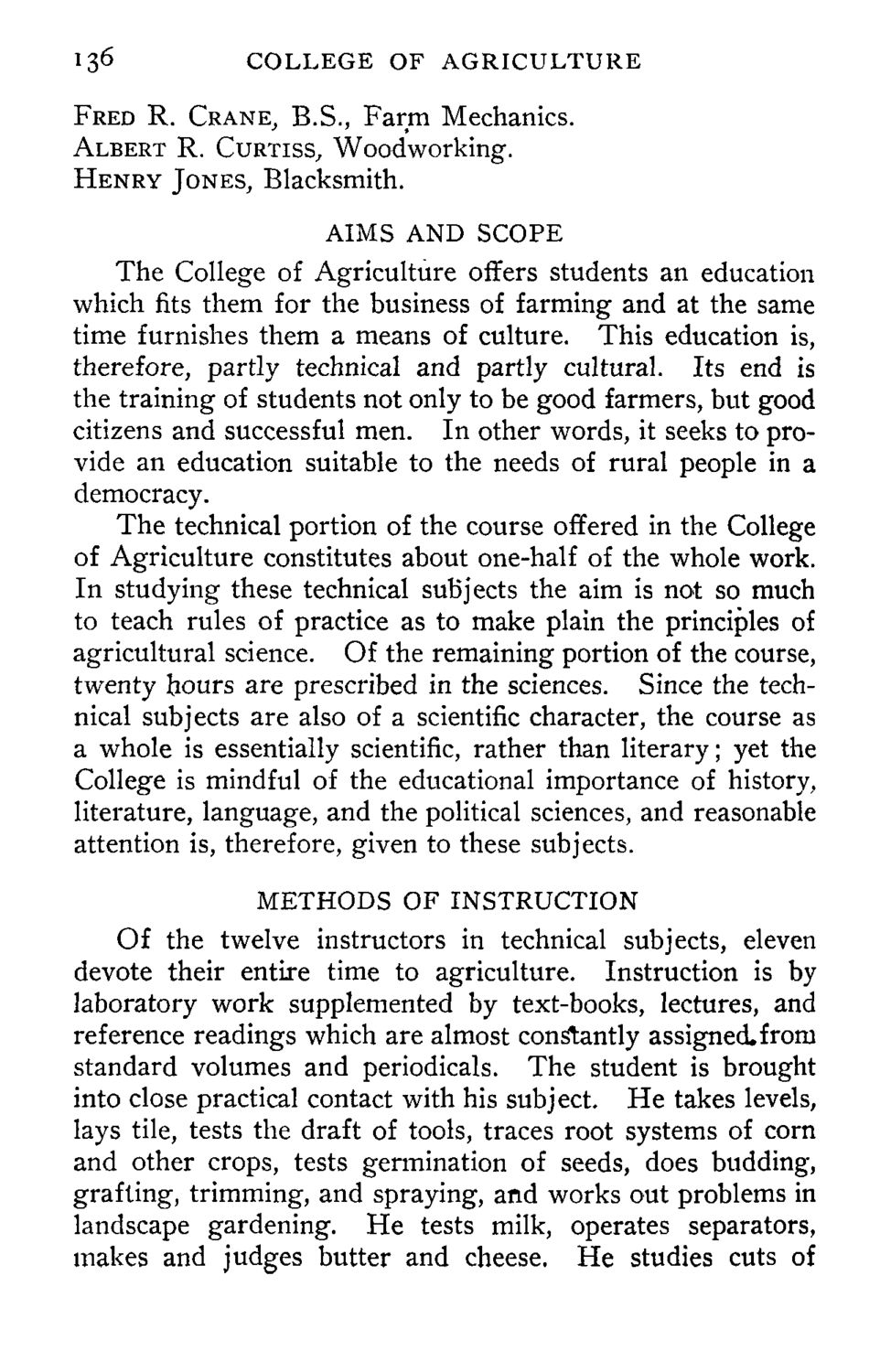| |
| |
Caption: Course Catalog - 1899-1900
This is a reduced-resolution page image for fast online browsing.

EXTRACTED TEXT FROM PAGE:
13 6 COLLEGE OF AGRICULTURE FRED R. CRANE, B.S., Farm Mechanics. ALBERT R. CURTISS, Woodworking. HENRY JONES, Blacksmith. AIMS AND SCOPE The College of Agriculture offers students an education which fits them for the business of farming and at the same time furnishes them a means of culture. This education is, therefore, partly technical and partly cultural. Its end is the training of students not only to be good farmers, but good citizens and successful men. In other words, it seeks to provide an education suitable to the needs of rural people in a democracy. The technical portion of the course offered in the College of Agriculture constitutes about one-half of the whole work. In studying these technical subjects the aim is not so much to teach rules of practice as to make plain the principles of agricultural science. Of the remaining portion of the course, twenty hours are prescribed in the sciences. Since the technical subjects are also of a scientific character, the course as a whole is essentially scientific, rather than literary; yet the College is mindful of the educational importance of history, literature, language, and the political sciences, and reasonable attention is, therefore, given to these subjects. METHODS OF INSTRUCTION Of the twelve instructors in technical subjects, eleven devote their entire time to agriculture. Instruction is by laboratory work supplemented by text-books, lectures, and reference readings which are almost constantly assigned, from standard volumes and periodicals. The student is brought into close practical contact with his subject. He takes levels, lays tile, tests the draft of tools, traces root systems of corn and other crops, tests germination of seeds, does budding, grafting, trimming, and spraying, and works out problems in landscape gardening. He tests milk, operates separators, makes and judges butter and cheese. He studies cuts of
| |